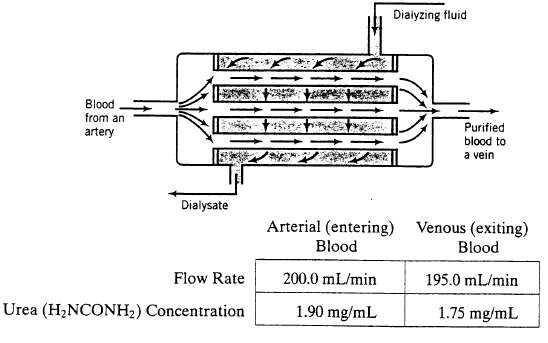An artificial kidney is a device that removes water and waste metabolites from blood. In one such
Question:
An artificial kidney is a device that removes water and waste metabolites from blood. In one such device, the hollow fiber hemodialyzer, blood flows from an artery through the insides of a bundle of hollow cellulose acetate fibers, and dialyzing fluid, which consists of water and various dissolved salts, flows on the outside of the fibers. Water and waste metabolites?principally urea, creatinine, uric acid, and phosphate ions?pass through the fiber walls into the dialyzing fluid and the purified blood is returned to a vein. At some time during a dialysis the arterial and venous blood conditions are as follows:
(a) Calculate the rates at which urea and water are being removed from the blood.
(b) If the dialyzing fluid enters at a rate of 1500mL/min and the exiting solution (dialysate) leaves at approximately the same rate, calculate the concentration of urea in the dialysate.
(c) Suppose we want to reduce the patient?s urea level from an initial value of 2.7mg/mL to a final value of 1.1mg/mL. If the total blood volume is 5.0 liters and the average rate of urea removal is that calculated in part (a), how long must the patient be dialyzed9 (Neglect the loss in total blood volume due to the removal of water in the dialyzer.)

Step by Step Answer:

Elementary Principles of Chemical Processes
ISBN: 978-0471720638
3rd Edition
Authors: Richard M. Felder, Ronald W. Rousseau





